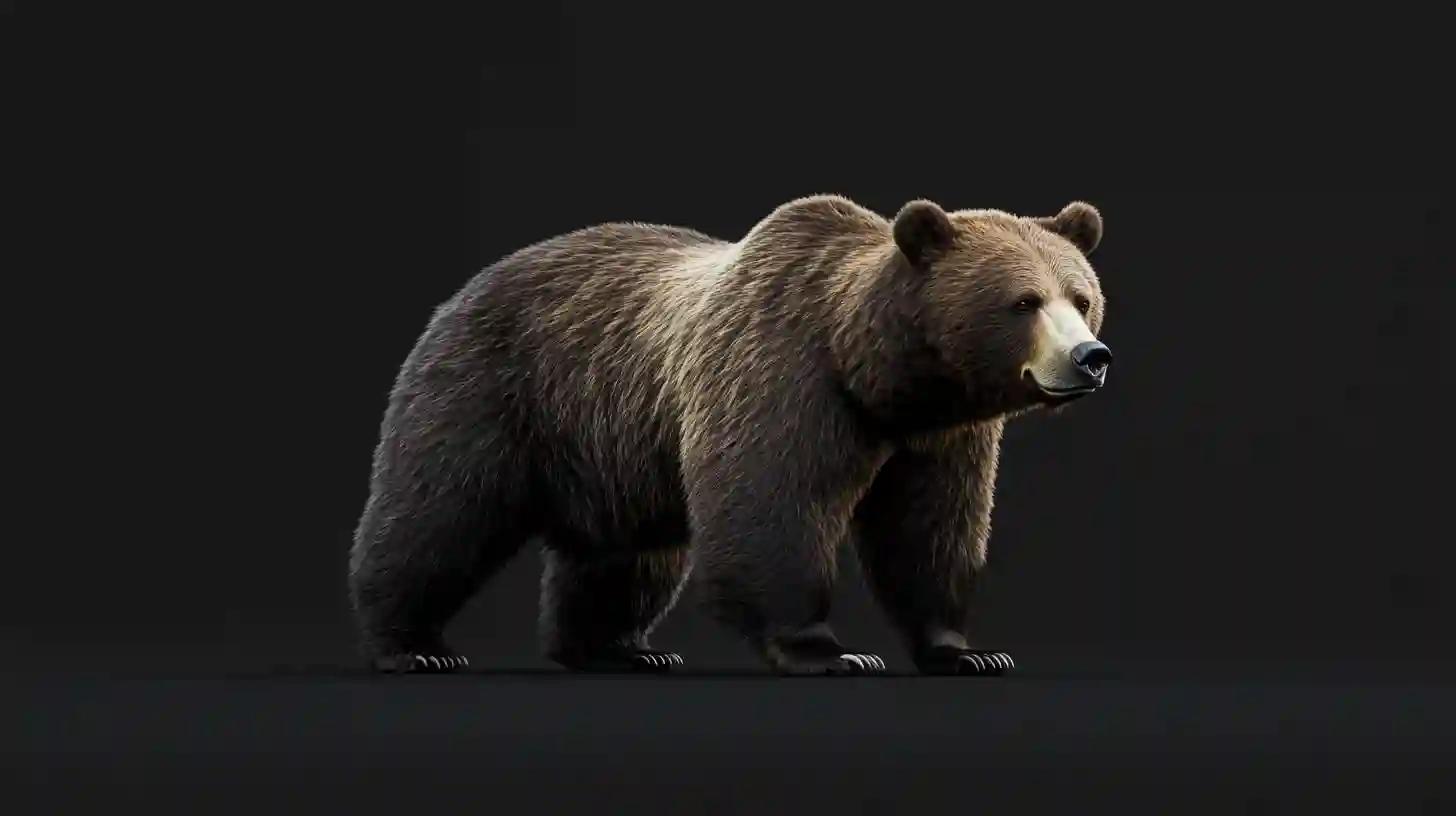
The Kodiak brown bear, a magnificent creature of nature, commands respect and awe with its sheer size and striking features. These bears inhabit the Kodiak Archipelago in Alaska, where they have adapted to their environment as both apex predators and symbols of wilderness. Known for their enormous stature, Kodiak bears can weigh up to a ton, with males generally being larger than females. Their impressive build is complemented by a thick, shaggy coat that changes in color from light brown to a much darker shade, allowing them to camouflage into their natural surroundings. This adaptation is crucial for both hunting and avoiding detection by potential threats.
Kodiak bears are omnivores with diverse dietary preferences. Their diet primarily consists of fish, particularly salmon, during the summer months when these fish swim upstream to spawn. The bears are known for their extraordinary fishing skills, using their powerful paws to swipe at splashing fish with remarkable accuracy. In addition to fish, they forage for berries, roots, and other plant materials throughout the year, ensuring their nutritional needs are met in various seasons. This flexibility in diet allows Kodiak bears to thrive in their often harsh and demanding environment, where food availability can fluctuate dramatically.
One intriguing aspect of Kodiak bear behavior is their hibernation cycle. As winter approaches, these bears enter a dormant state, where their metabolic rate slows significantly. Hibernation is not simply a long sleep; rather, it is a state of energy conservation that allows bears to survive months without food as they remain tucked away in dens. Female bears often give birth during this period to cubs that are born small and helpless. They emerge in the spring nurturing their young and teaching them vital survival skills. This close interaction between the mother and her cubs underscores the strong maternal instincts inherent in Kodiak bears.
Social behavior in Kodiak bears is another fascinating dimension of their existence. While they are generally solitary animals, they exhibit social dynamics, especially when it comes to feeding. During salmon runs, it is common to see multiple bears congregating at rivers and streams, competing for feeding spots. In these situations, they display a hierarchy, with larger, dominant bears often having the first choice of prime fishing locations. Conflicts can arise, but Kodiak bears typically prefer to avoid unnecessary confrontations, using body language and vocalizations to communicate their intentions.
Alaska's Kodiak Archipelago provides the perfect backdrop for these bears, offering a wealth of resources, with abundant waterways for fishing, dense forests for foraging, and vast expanses of wilderness for roaming. This habitat is not just significant for the bears but also plays an important role in the broader ecosystem. As top predators, Kodiak bears help regulate populations of other species and contribute to the overall balance of their environment. Their foraging activities can also aid in seed dispersion, promoting plant growth and diversity across the landscape.
Despite their formidable presence and adaptations, Kodiak bears face a number of challenges due to human activities. Habitat encroachment, climate change, and hunting pressures threaten their populations. Conservation efforts have become increasingly vital to ensure these magnificent creatures continue to thrive. Environmental organizations and local governments work together to protect bear habitats, regulate hunting, and raise awareness about the importance of preserving these iconic animals and the ecosystems they inhabit.
The Kodiak bear represents not only a fascinating aspect of wildlife but also sparks our imagination and admiration for nature’s wonders. Their sheer size, hunting prowess, and social complexity elevate them to iconic status in the animal kingdom. Observing these magnificent creatures in their natural habitat is not just an awe-inspiring experience; it also serves as a reminder of the intricate balance between wildlife and the environment. Protecting the Kodiak bear aligns with a broader commitment to biodiversity and ecological health, emphasizing our responsibility in the stewardship of the planet.
The Kodiak brown bear captivates those lucky enough to encounter them, fostering a deeper appreciation for wildlife among humans. Each sighting is a powerful testament to the beauty and resilience of nature, encouraging continued efforts to safeguard these majestic animals and the wild places they call home. From their impressive life cycles to their complex interactions with the world around them, Kodiak bears stand as living icons of the wilderness, inspiring generations to cherish and protect the natural world.